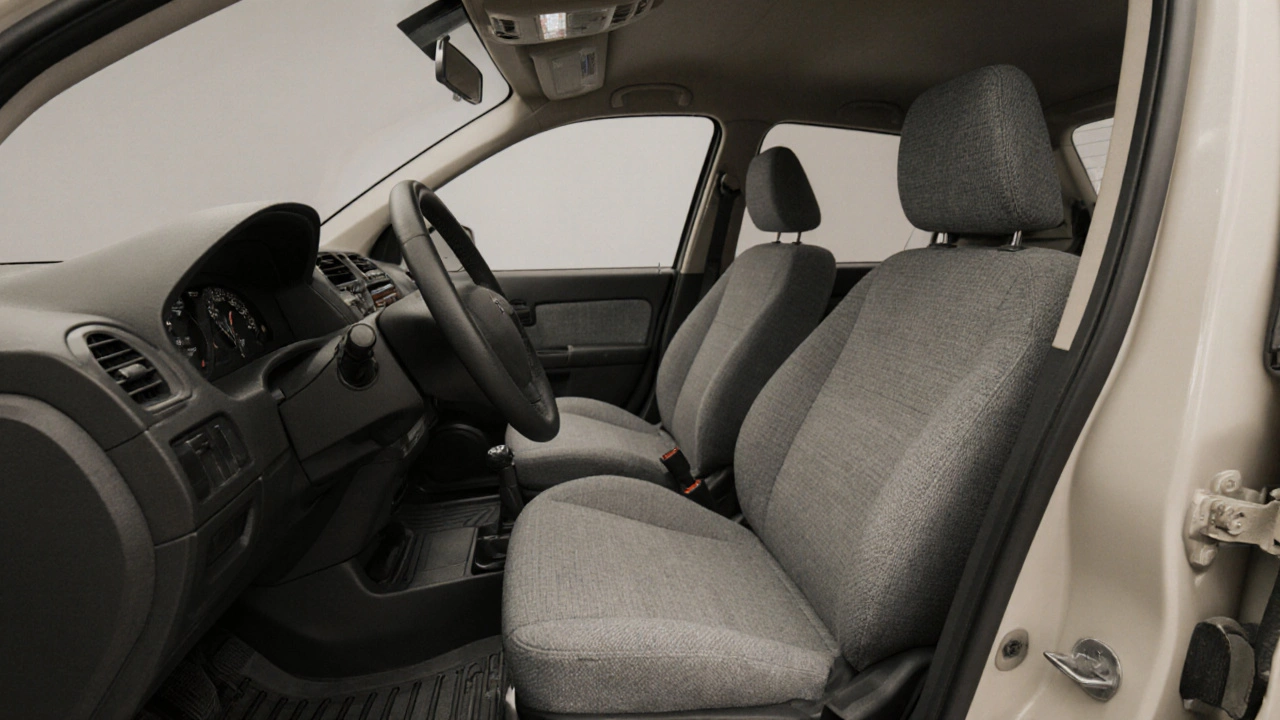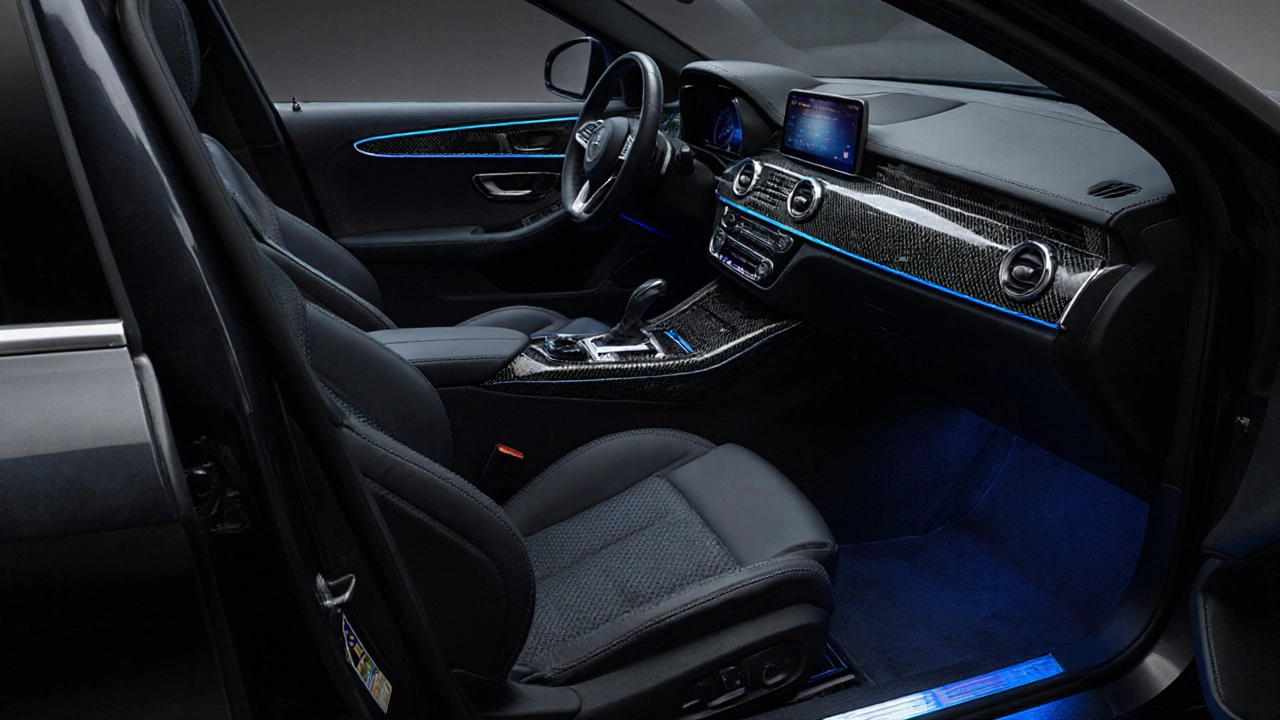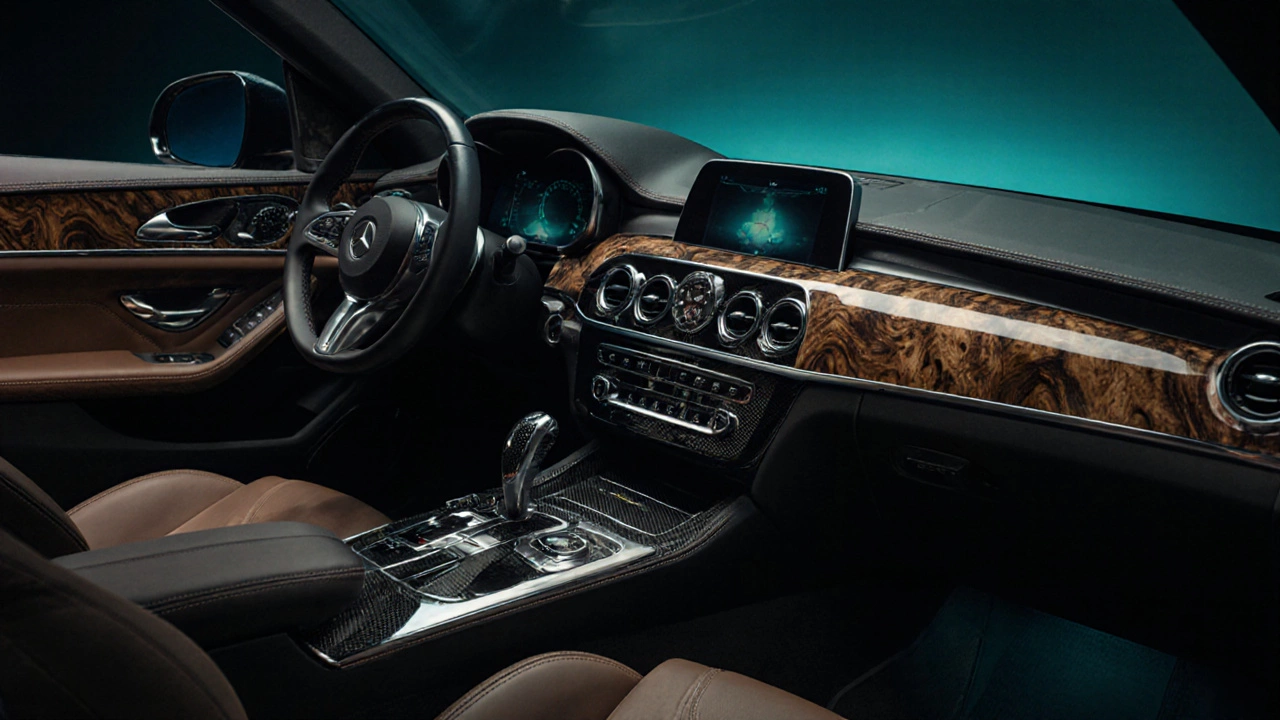How to Make Your Car Interior Look Expensive: Simple Upgrades & DIY Tips
 Oct, 22 2025
Oct, 22 2025
Car Interior Upgrade Cost Calculator
Select Your Upgrades
Choose the luxury features you want to add to your car interior
When you walk into a Car interior is the first thing you notice - the seats, the dash, the little details that tell you whether the ride feels cheap or classy. You don’t need a $100k vehicle to get that high‑end vibe; a handful of thoughtful tweaks can turn a bland cabin into a luxe space without breaking the bank. Below is a step‑by‑step guide that mixes budget‑friendly DIY moves with a few premium‑grade upgrades, so you can finally enjoy a ride that looks as good as it feels.
What Makes a Car Interior Feel Expensive?
Before you start buying accessories, understand the visual cues that scream luxury. Most upscale interiors share these five traits:
- Premium Materials - soft leather, real wood, brushed metal, or carbon fiber.
- Consistent Color Palette - muted tones, matching trims, and minimal clash.
- Ambient Lighting - subtle LEDs that highlight contours without glaring.
- Clean Lines & Finish - no visible seams, glossy surfaces, and precise stitching.
- Attention to Details - custom shift knobs, steering wheel covers, and neat floor mats.
With those concepts in mind, you can prioritize upgrades that hit the most visual impact for the least cost.
Budget‑Friendly Upgrades That Pack a Punch
These swaps cost under £150 each and are easy enough for anyone with a basic set of tools.
- Seat covers - Choose a high‑quality neoprene or faux‑leather set in a neutral color. They add texture and protect original upholstery.
- Steering wheel cover - A stitched leather grip not only feels better but also adds a visual focal point.
- Carpet flooring - Replace cheap mats with custom‑cut carpet inserts that hug the curves of the footwell.
- Dashboard accessories - A sleek carbon‑fiber trim strip or brushed‑aluminum overlay can instantly upgrade the dash.
- Ambient lighting - Install a plug‑and‑play LED kit that offers multiple colors and dimming options.
All of these can be fitted in under an hour, and each one adds a layer of refinement.
Introducing Premium Materials Without a Full‑Resto
If you want the feel of a high‑end vehicle without a full interior overhaul, focus on key touchpoints.
- Leather upholstery - Instead of re‑upholstering the whole seat, apply a leather‑finish kit to exposed panels or the head‑rest. It’s a vinyl‑based product that mimics genuine leather and costs around £70 per seat.
- Wood trim - Peel‑and‑stick wood veneer sheets give a classic luxury look. Choose walnut or mahogany tones, and finish with a polyurethane sealant for durability.
- Carbon fiber parts - Small accents like a carbon‑fiber shift knob or console panel are surprisingly affordable (≈£30 each) and inject a modern, sporty vibe.
These material upgrades are high‑impact because they target the areas you see and touch most often.

Lighting & Ambience - The Subtle Game Changer
Professional cars use ambient lighting to set a mood. You can replicate that feel with a DIY LED system. Look for kits that include:
- RGB strips with a remote or smartphone app for color selection.
- Clear silicone tubing for a smooth glow across door panels.
- Built‑in dimmers to sync the lights with music or speed (optional).
Installation involves routing the power cable to an existing 12 V socket, clipping the strips into the door sills, and sealing the ends. The result is a cabin that feels both futuristic and premium.
Professional Touch vs DIY - When to Call a Pro
Not every upgrade is DIY‑friendly. Some tasks, like stitching custom leather seats or installing factory‑grade wood veneer, require specialized tools. Below is a quick comparison to help you decide.
| Upgrade Type | Cost (Approx.) | Installation Difficulty | Longevity | Result Quality |
|---|---|---|---|---|
| Seat covers | £50‑£100 | Easy | 3‑5 years | Good |
| Leather upholstery kit | £70‑£120 per seat | Medium | 5‑7 years | Very good |
| Wood trim (vintage veneer) | £80‑£150 total | Medium | 5‑10 years | Excellent |
| Full interior re‑upholstering | £800‑£2000 | Hard (pro only) | 10‑15 years | Luxury |
| Ambient LED kit | £30‑£80 | Easy | 3‑5 years | Good |
If you’re comfortable with basic tools and have a knack for attention to detail, the DIY route offers great value. When you crave flawless stitching or integrated factory finishes, a professional shop is worth the expense.

Maintaining the Luxury Look
Nothing ruins an expensive feel faster than neglect. Follow these simple habits:
- Vacuum the carpet and floor mats weekly to prevent dust buildup.
- Wipe down leather or faux‑leather surfaces with a pH‑balanced cleaner every month.
- Polish wood veneer with a gentle oil‑based polish twice a year.
- Check LED connections periodically for any loose wires or fading colors.
Consistent care extends the life of your upgrades and keeps the cabin looking fresh.
Quick Checklist - Turn Your Interior into a Luxury Cabin
- Swap cheap seat covers for high‑quality faux‑leather or neoprene.
- Install a stitched leather steering wheel cover.
- Add carpet flooring that matches the cabin’s color scheme.
- Fit wood‑grain veneer or carbon‑fiber panels on the dash.
- Mount an ambient LED kit with your favorite color palette.
- Keep everything clean and regularly conditioned.
Tick those boxes, and you’ll notice the difference immediately - even your passengers will comment on how “up‑market” the ride feels.
Frequently Asked Questions
What’s the cheapest way to make my car interior look premium?
Start with a set of well‑fitting seat covers, a leather‑look steering wheel wrap, and a low‑cost ambient LED kit. These three upgrades can be done for under £150 total and give an immediate upscale impression.
Can I install wood trim myself without ruining it?
Yes, if you use peel‑and‑stick veneer sheets designed for automotive use. Clean the surface, apply the adhesive, and seal with a clear polyurethane coating to protect against heat and sunlight.
Do LED ambient lights affect my car’s battery?
Modern kits draw less than 1 amp, so the impact on a healthy 12 V battery is negligible. If you park for long periods, you can unplug the kit or install a fuse‑protected line to the interior fuse box.
How often should I condition leather seats?
Apply a leather conditioner every 2‑3 months, especially in dry or hot climates. This prevents cracking and keeps the surface supple.
Is it worth paying a professional to install carbon‑fiber trim?
If you want a seamless, factory‑like finish, a pro can ensure perfect alignment and bonding. For a modest visual boost, a DIY kit works fine, but watch out for bubbles or uneven edges.